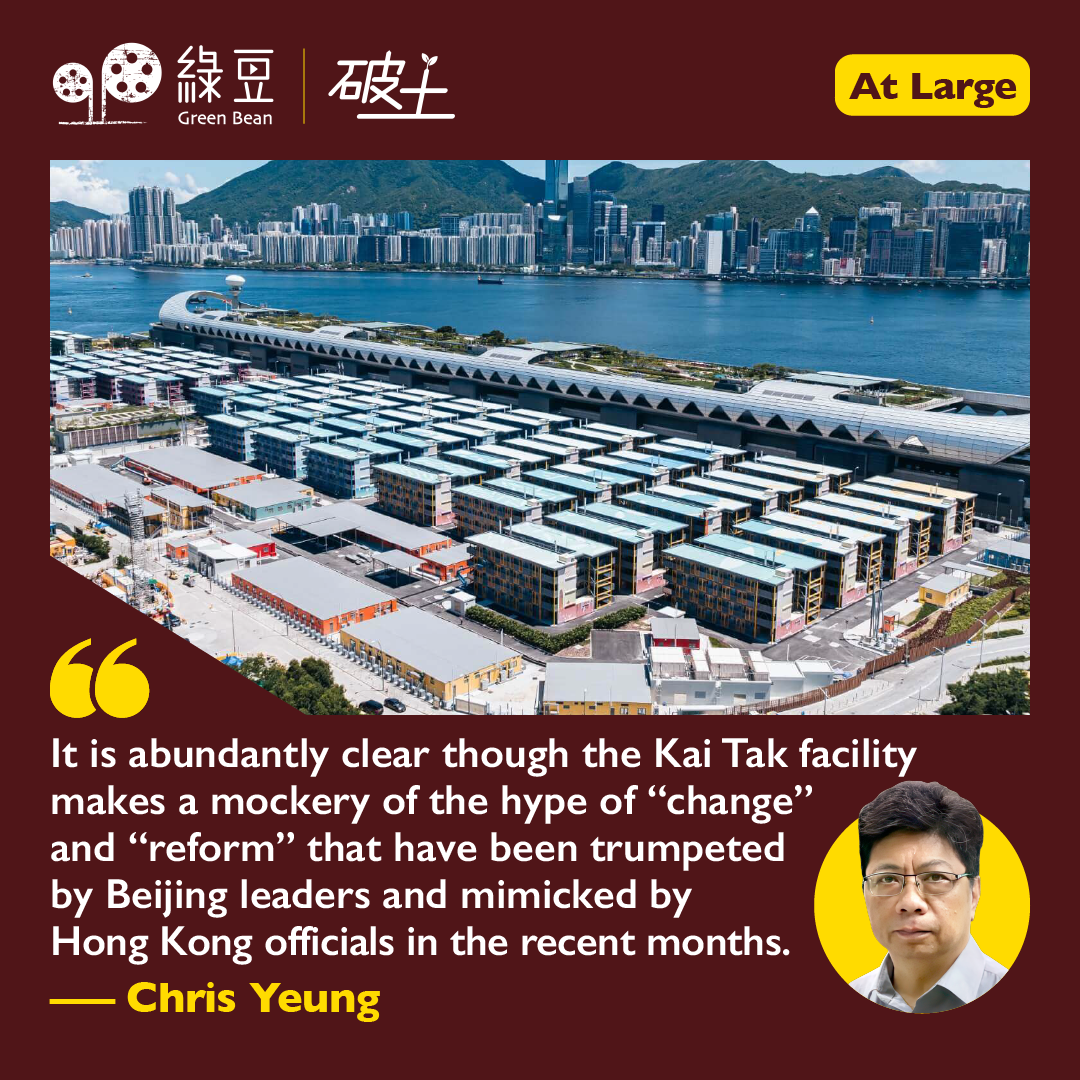Kai Tak Covid centre trapped in political maze

Amid fears of another wave of Covid pandemic onslaught in early 2022, the Chinese central government has helped Hong Kong, with the participation of mainland firms, build eight quarantine camps from scratch.
Aside from battling the pandemic, Beijing’s helping hands were seen as a big booster to the feelings of Hongkongers towards the nation through the show of the communist leadership’s love for the people and the country’s shocking construction capability.
At a ceremony marking the completion of a facility at Kai Tak, the then development minister Michael Wong hailed it as a “miracle.” The then architectural services department head Ho Wing-yin said the completion of the Kai Tak project has testified the “can do spirit”.
An embarrassing sign
The facility, with 3,000 homes, is located next to the Kai Tak Cruise Terminal, which occupied part of the massive area at the Kowloon side of the Victoria Harbour that was left vacant after the airport was relocated to Chek Lap Kok in 1998.
The good news was that another deadly pandemic attack had never happened. The good news that the Kai Tak facility had never been used has turned sour after it has stayed unused since its completion.
The Government was red-faced when it was revealed taxpayers have been paying HK$400,000 each month for its renovation.
Once seen as a showcase of Beijing’s love for Hong Kong compatriots and the nation’s building might, the vacant quarantine homes at Kai Tak have emerged as an embarrassing sign of the decision-making maze, or perhaps mess, in the city.
Need Beijing approve ?
Adding more drama to the irony are words saying the Beijing factor is behind the indecisiveness of the John Lee administration when it comes to identifying new purposes of the Kai Tak facility, according to “pro-establishment figures” quoted in a political column of the Chinese-language Hong Kong Economic Times.
The article said the Government has preferred caution not to demolish the facility that was built with the help of the mainland authorities but was never used. Any change of its uses needed to be approved by Beijing, it said.
A legislator was said to have been told not to repeatedly put pressure on the Government for a decision on the fate of the facility. The article did not name names.
Regardless of its new purpose/s, a decision seems to be better than none. Chief Executive John Lee is expected to make an announcement in his upcoming 2024 Policy Address at the Legislative Council on October 16.
Loaded with political ramifications
The political gossip mouthed by pro-establishment figures has shed some intriguing light on the policy decision-making of the Hong Kong Government in the post-national security law era.
Flashed back to the Covid pandemic, it was apparently clear that the then chief executive Carrie Lam was under enormous pressure for her to emulate the mainland’s anti-Covid strategy, including a shut-down of the city.
The massive building of guarantee centres and isolation facilities with the backing of the central authorities and mainland firms, totaling 50,000 homes, in 2022 was a replica of similar works in the mainland.
It was apparently because the Kai Tak facility was loaded with political ramifications that has prompted the Lee team to tread with extra caution in turning it into something else.
This is despite the fact that the mainland authorities may not have an idea of the use of the site or, most probably, do not want to get involved in a clearly “internal matter” of the Hong Kong SAR.
It sounds inconceivable that the central authorities would like to impose a decision on the use of the Kai Tak site.
Risk of indecisiveness
Whether Beijing does have a view is unclear. Equally unclear is whether the Government’s second-guessing of Beijing’s thinking has indeed been pulling its own legs. Or it is simply a case of bureaucratic inertia and indecisiveness of the city’s ruling team.
It is abundantly clear though the Kai Tak facility makes a mockery of the hype of “change” and “reform” that have been trumpeted by Beijing leaders and mimicked by Hong Kong officials in the recent months.
Careful and thorough thinking is an integral part of good policy-making. But excessive thinking verging on paranoid poses a risk of indecisiveness when a decision is long overdue.
Public policy-making in Hong Kong looks set to be made needlessly more complicated with the mainland authorities becoming more visible and vocal over the SAR’s governance.
( Photo : ASD )